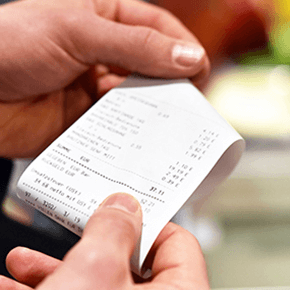
Is Return Fraud Cutting into Your Store’s Profits?
For brick-and-mortar retailers, return fraud can be a serious financial threat. There are several types of schemes. But when they’re successful, they all end the same way: Stores issue refunds that they shouldn’t have. Here’s what to look for and how to limit losses.
Myriad Schemes
Return fraud perpetrators could be customers, employees or even a criminal gang working with employee accomplices. In perhaps the most common scheme, an individual steals merchandise, and then returns it and insists on a cash refund, despite the lack of a receipt. Or a criminal steals merchandise from one retailer and then returns it to another for a cash refund.
Some thieves do supply receipts — but they’re fake. The “customer” hands over an altered or completely counterfeit receipt that the original payment was made in cash. The retailer then issues a full cash refund.
Other return fraud schemes might involve:
Stolen cards. The thief makes a purchase using a stolen credit card. He or she then returns the merchandise, usually on the same day (before the actual cardholder disputes the charge). The goal is a full cash refund.
Damaged goods. Instead of returning merchandise in new, as-sold condition, customers return items that are worn, damaged or broken. They distract the employee processing the refund from closely scrutinizing the merchandise with conversation or other diversions.
Crooked workers. An employee discounts merchandise and sells it to an accomplice who subsequently returns it to the same employee for a refund at full price. Workers might also steal merchandise and then instruct their accomplices to return it without a receipt for a cash refund.
Reducing Crime
You can reduce the incidence of return fraud by making it hard for thieves to get their hands on cash. Issue refunds only when they’re accompanied by an original receipt and only to credit cards. Scan receipts into your point of sale system to ensure they were produced by your store’s registers. If a purchase wasn’t made with a credit card — or if the customer doesn’t have the card on hand — refund it with a store credit. You may also want to ask the customer to produce identification.
To help limit employee-perpetrated return fraud, install security cameras, ensure strong management oversight and provide a confidential fraud reporting hotline. In addition, monitor the frequency and value of returns processed by individual cashiers and investigate employees with higher-than-average return numbers.
Walking a Thin Line
Although you don’t want to encourage crooks, you may think a generous return policy is essential to providing superior customer service. So that you don’t alienate legitimate customers, state your return policies clearly at every cash register and on every receipt. And contact us for help writing a policy that balances all your priorities.
